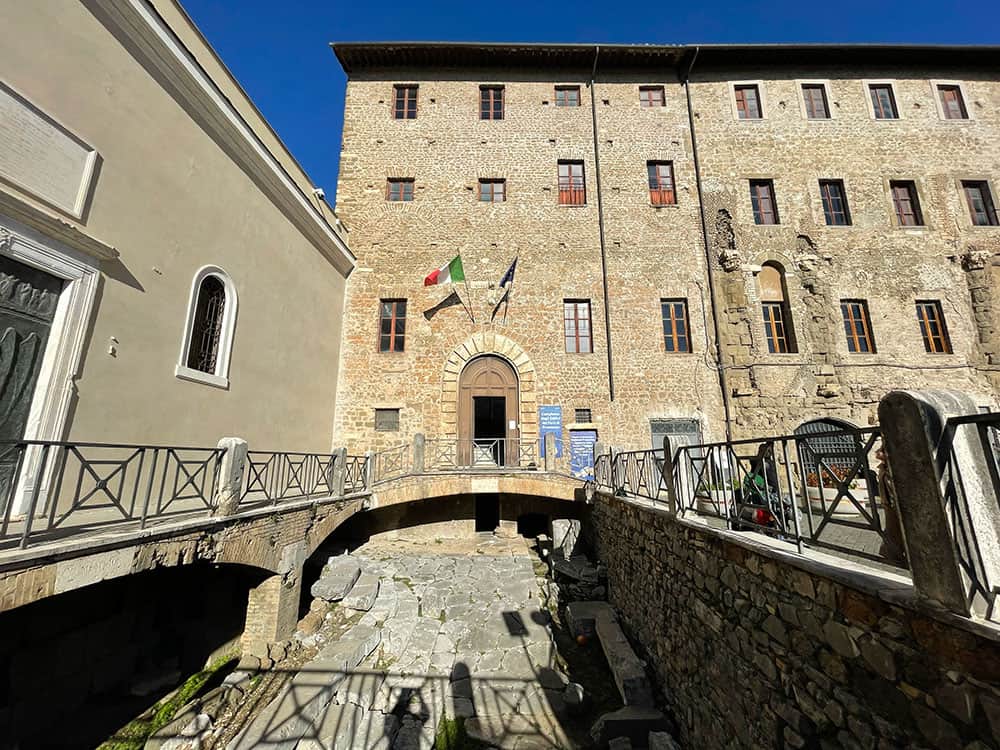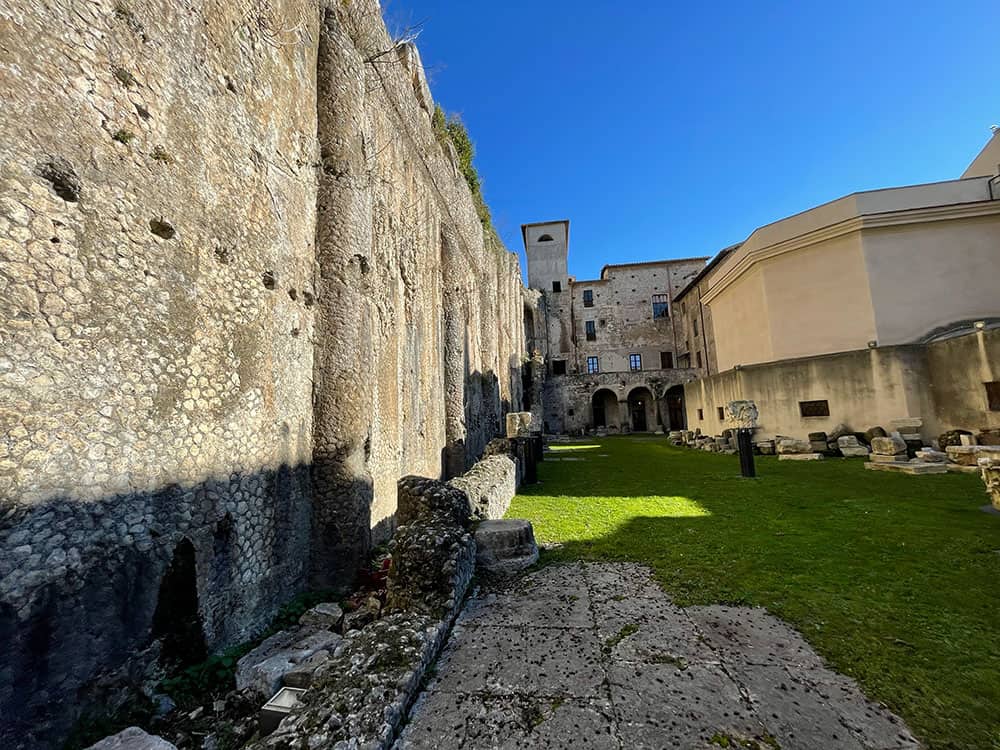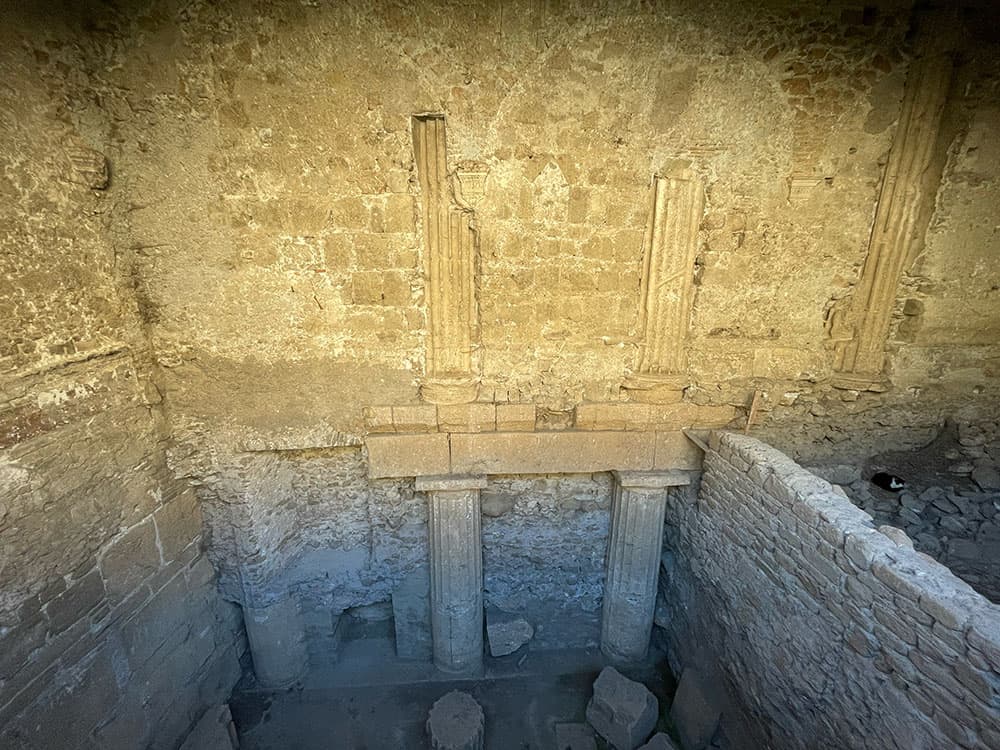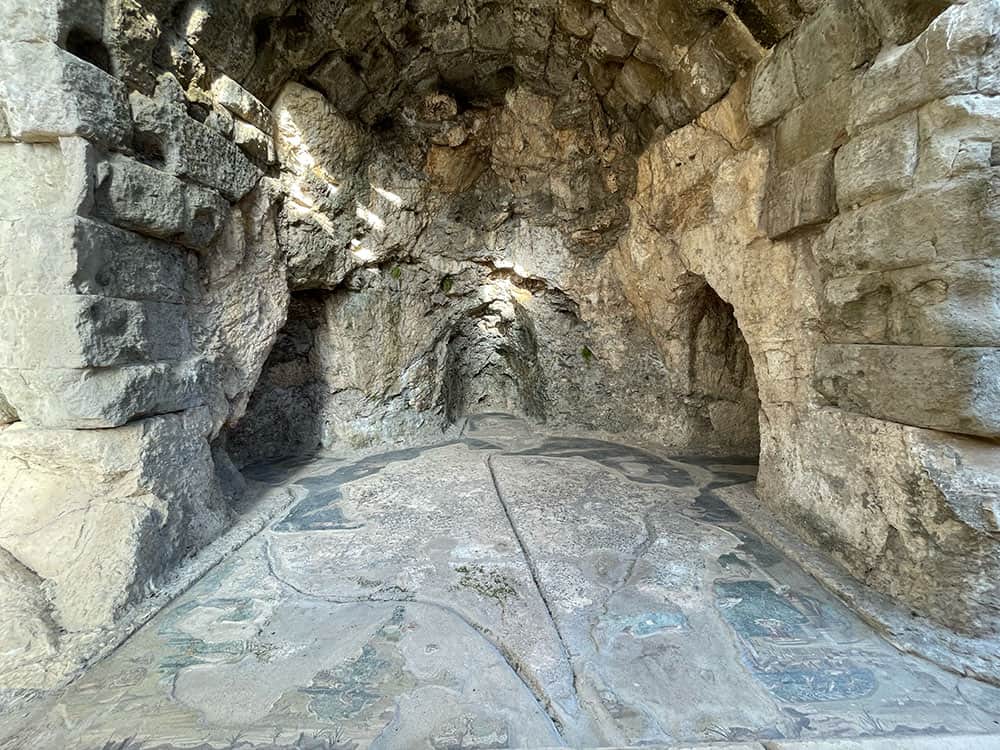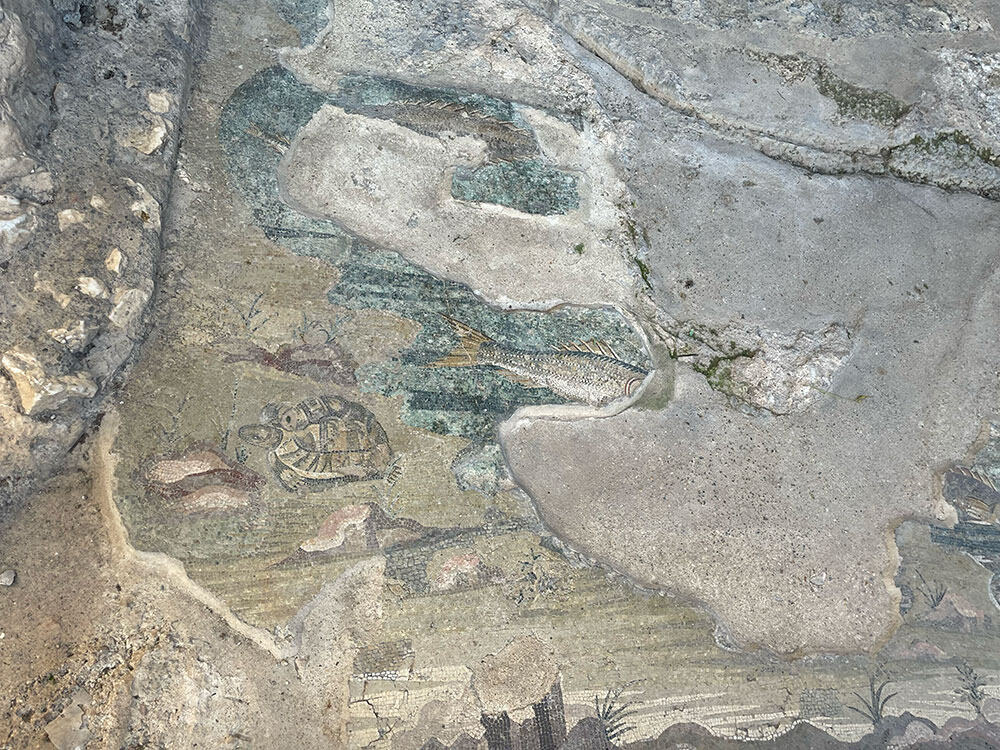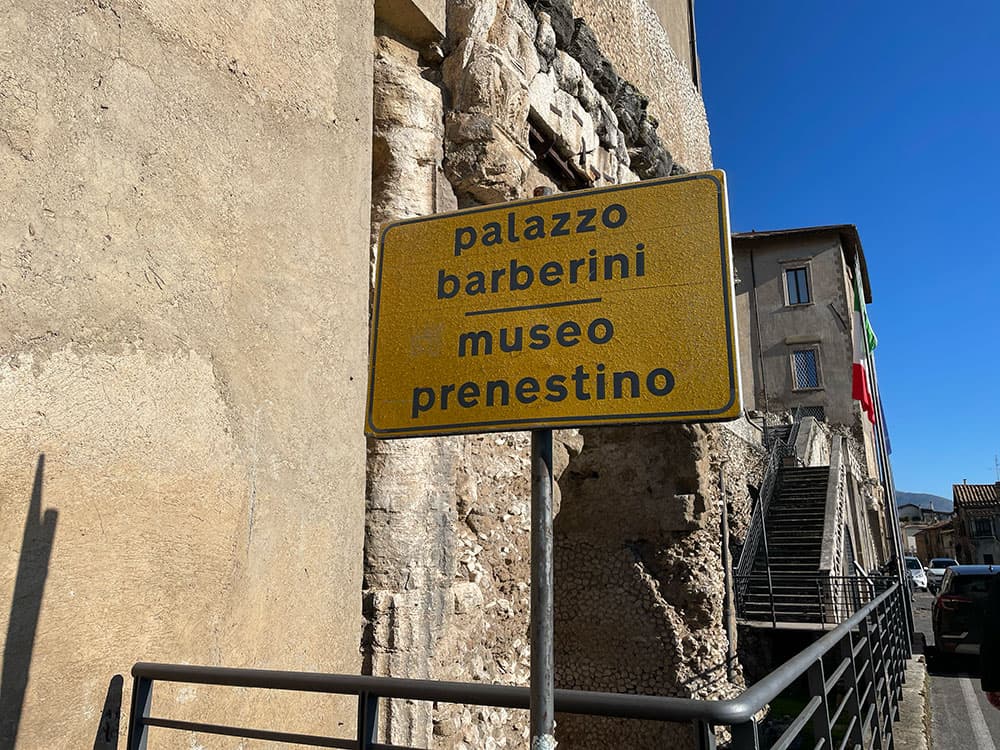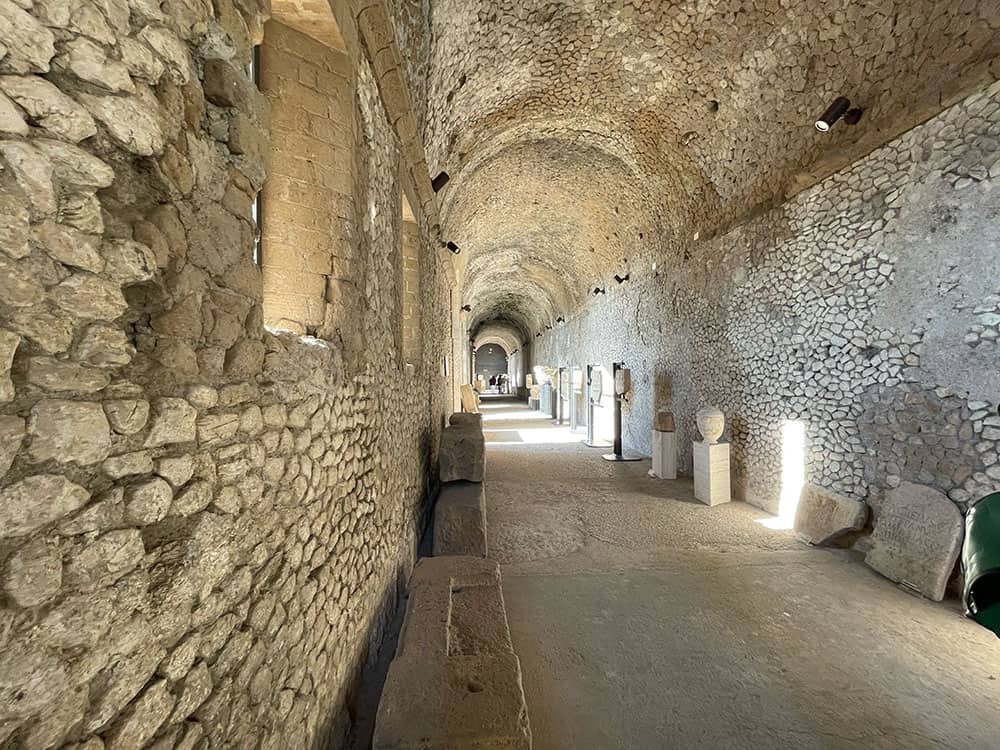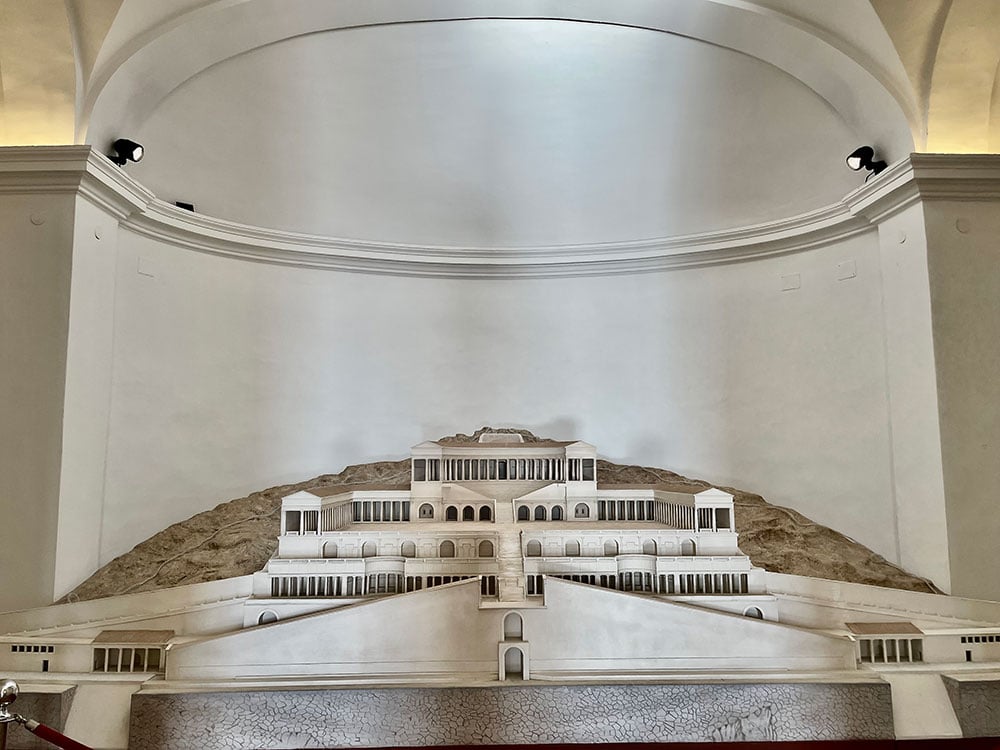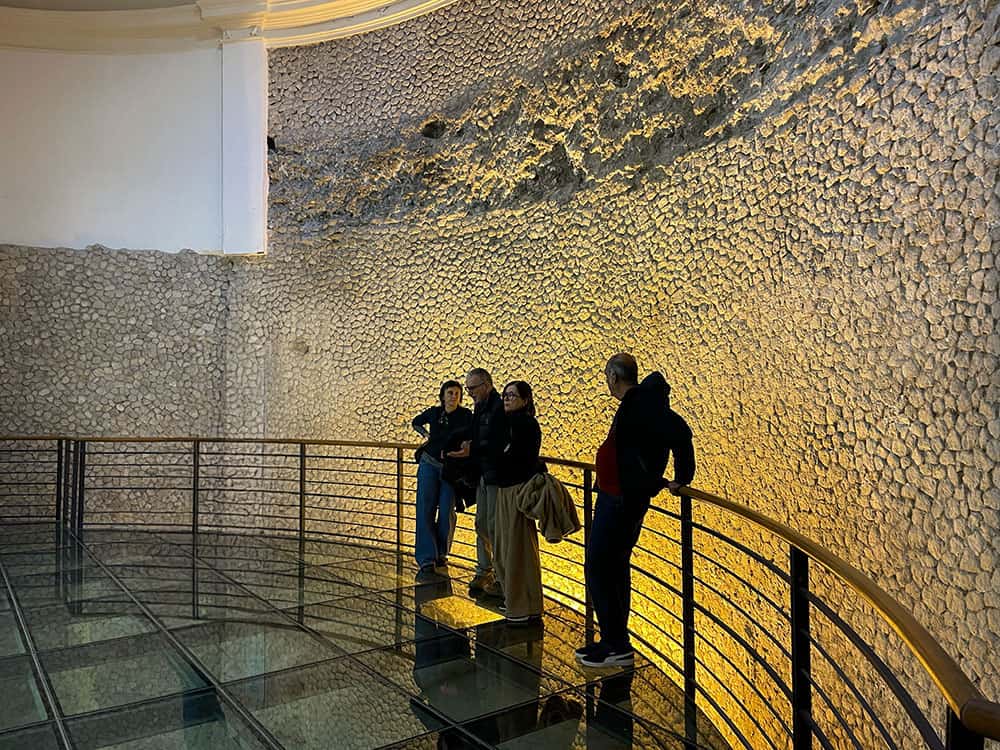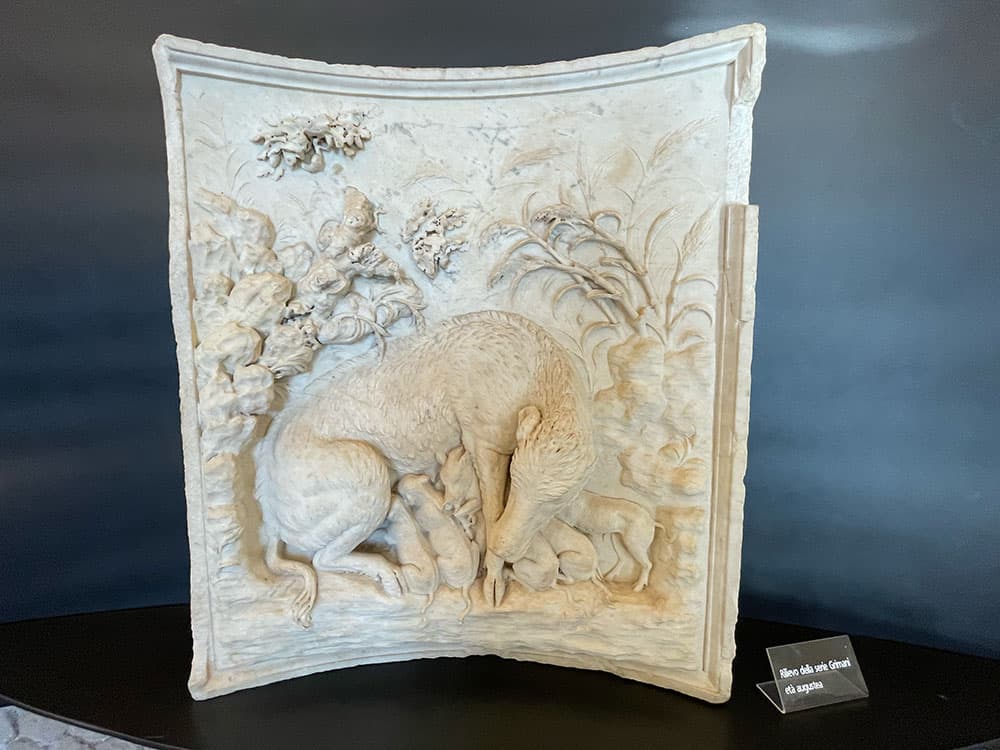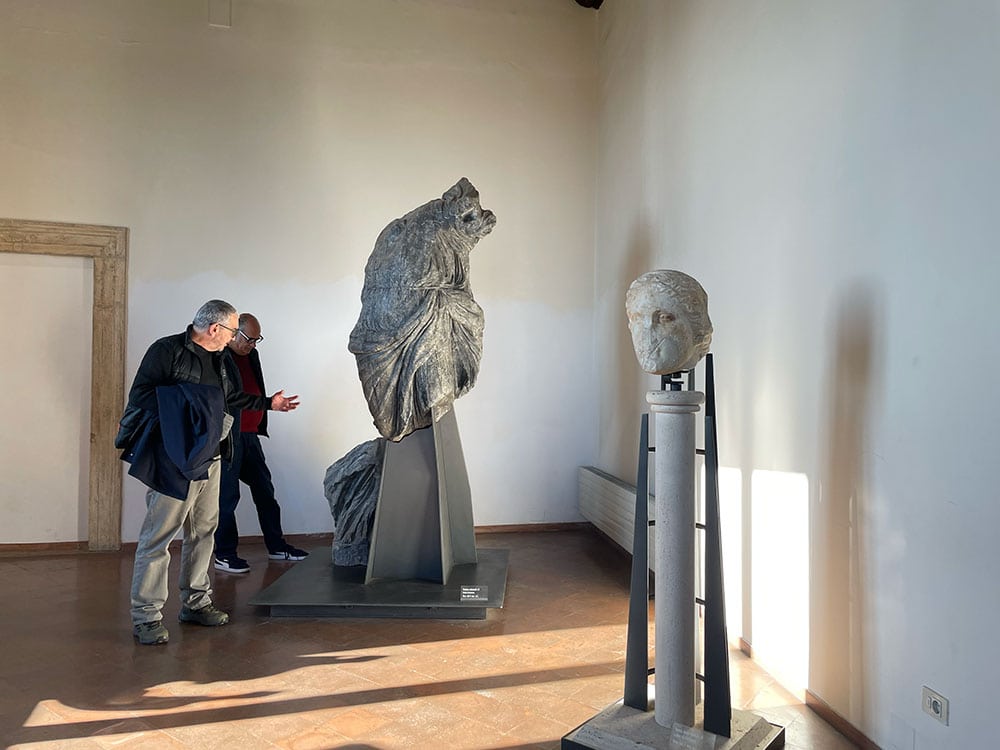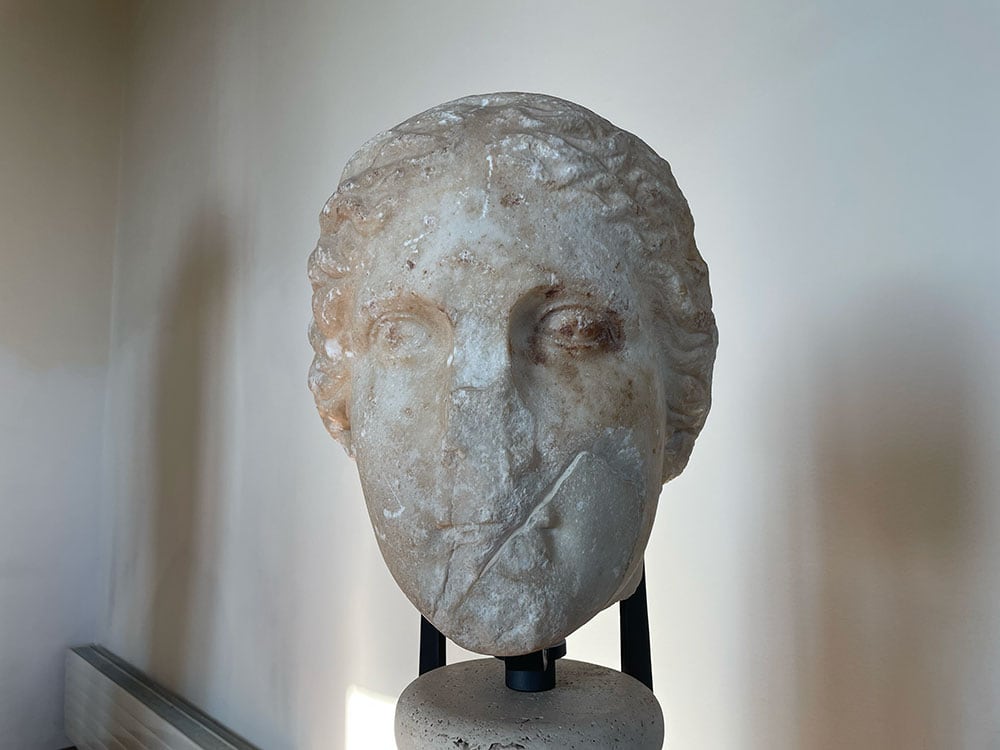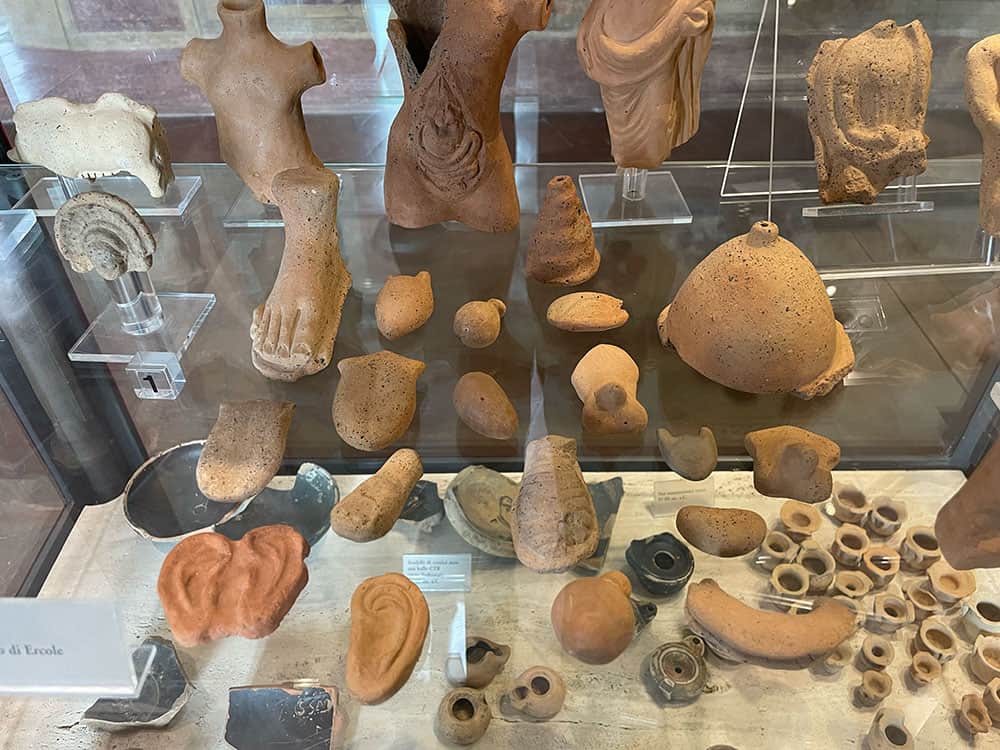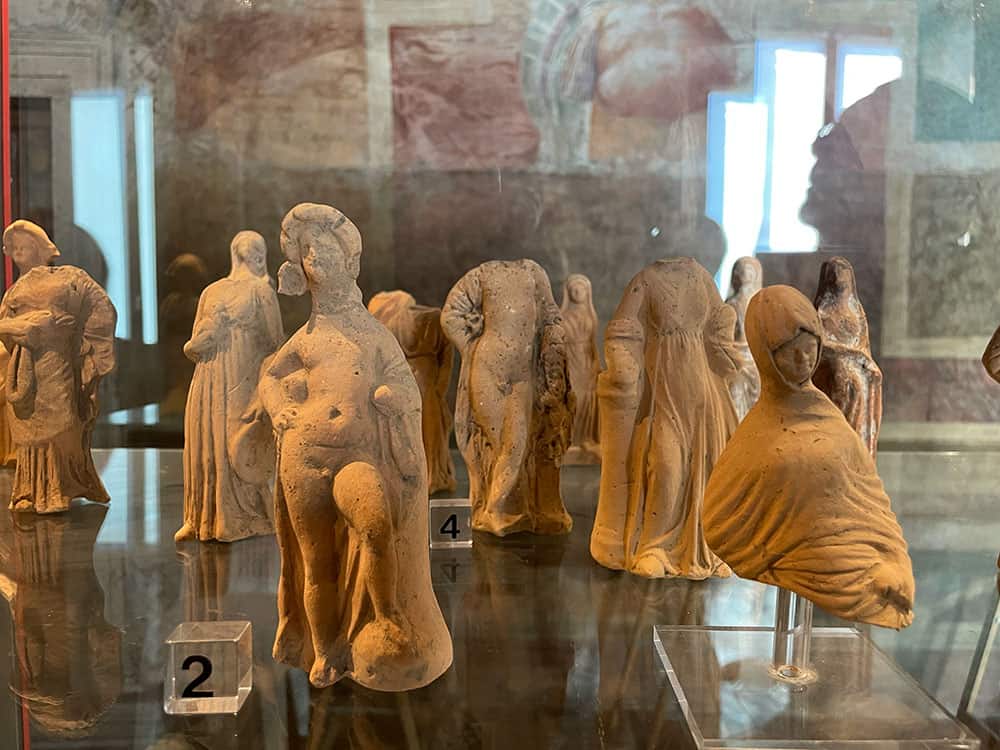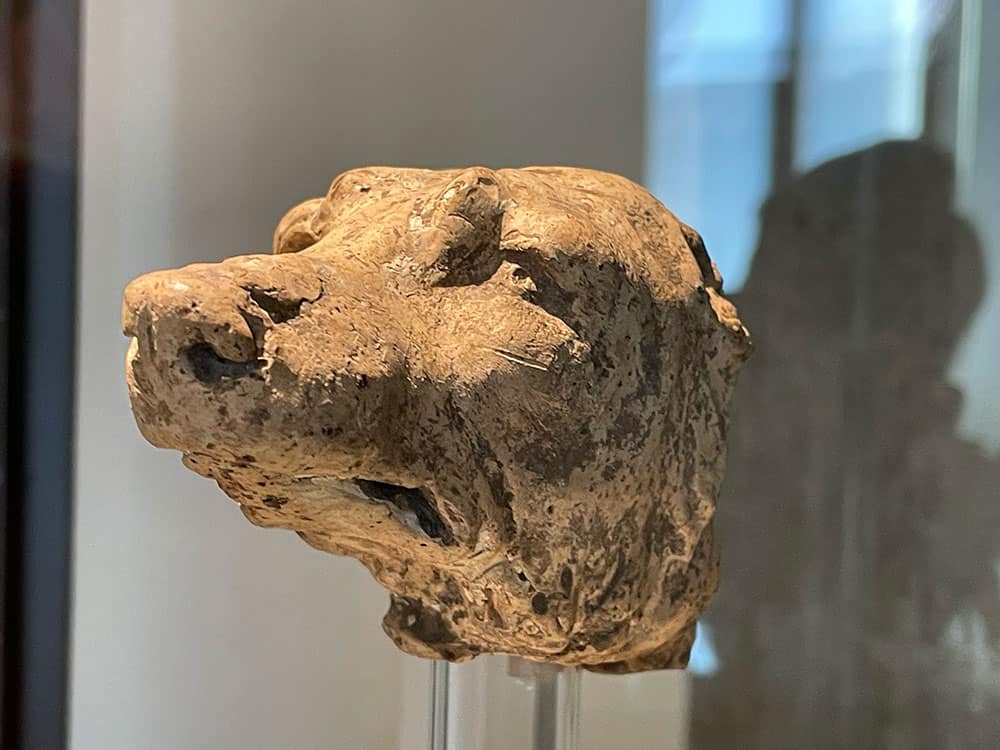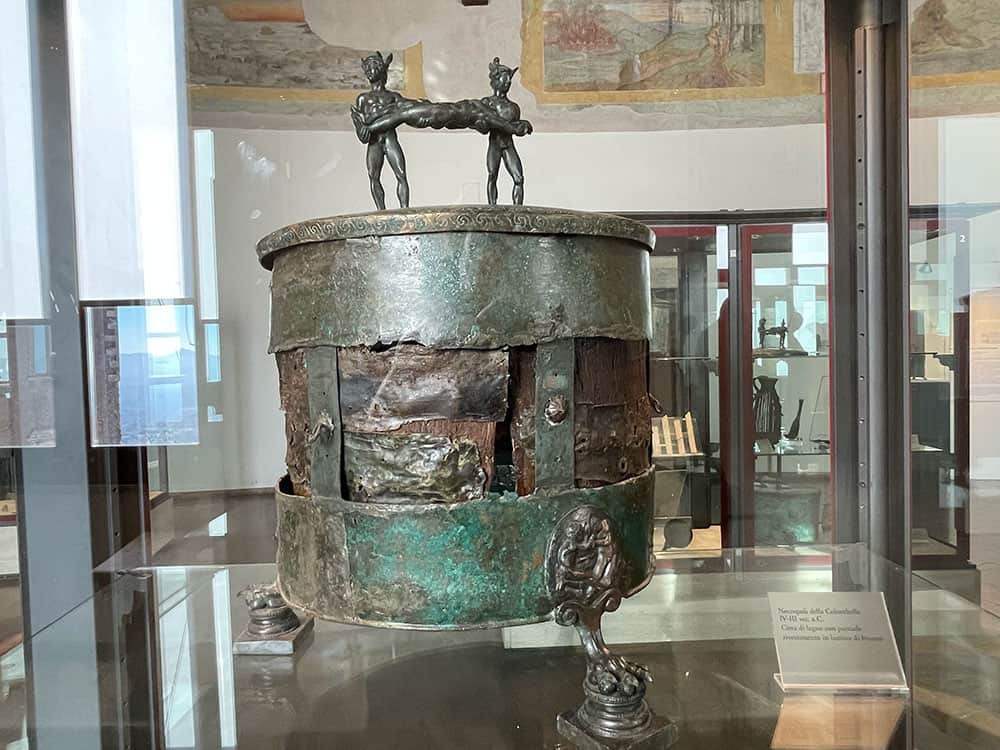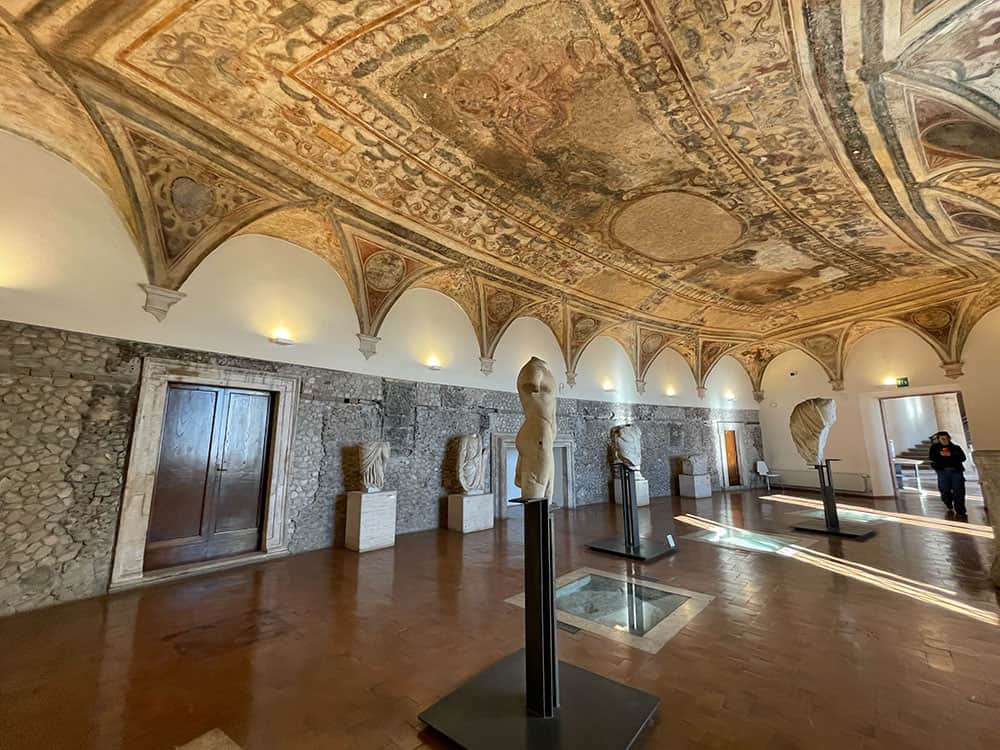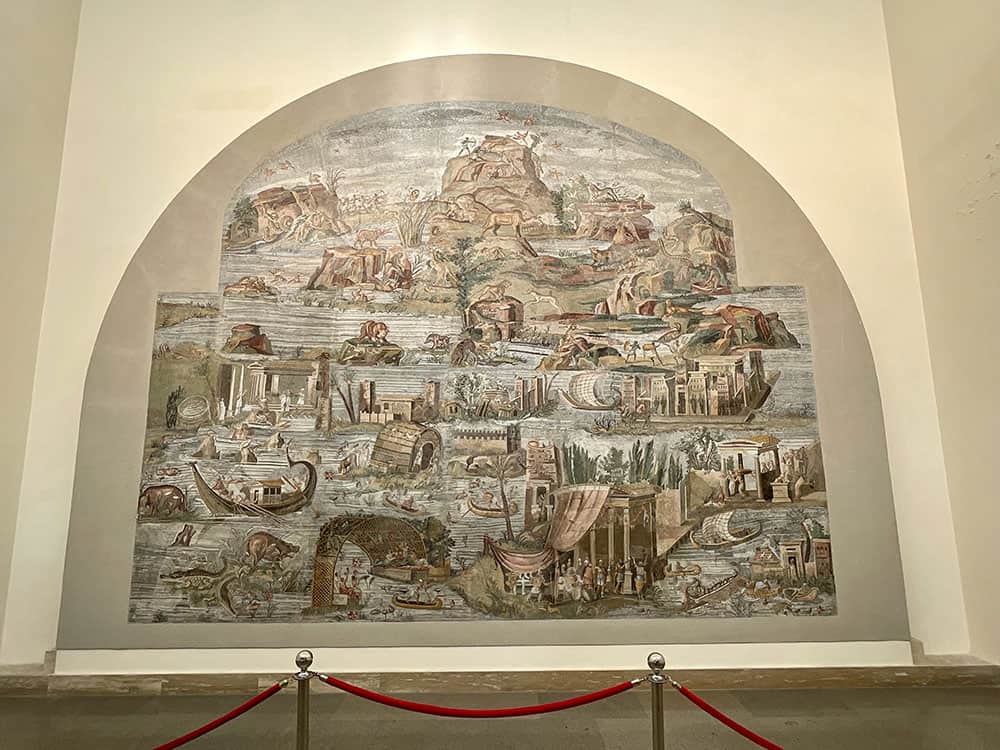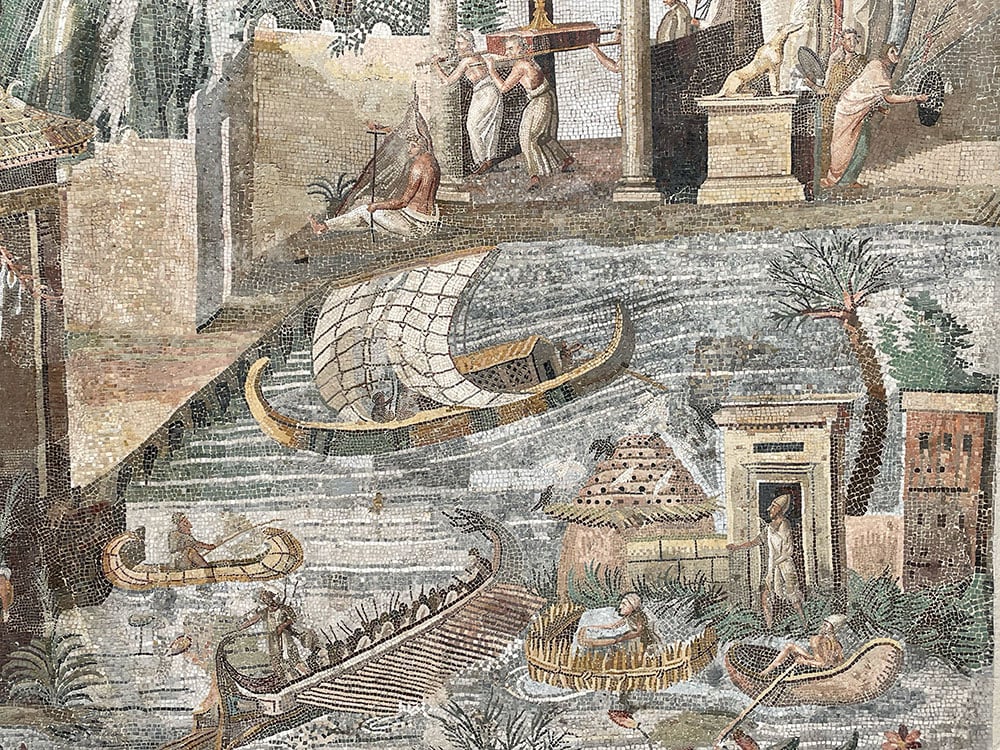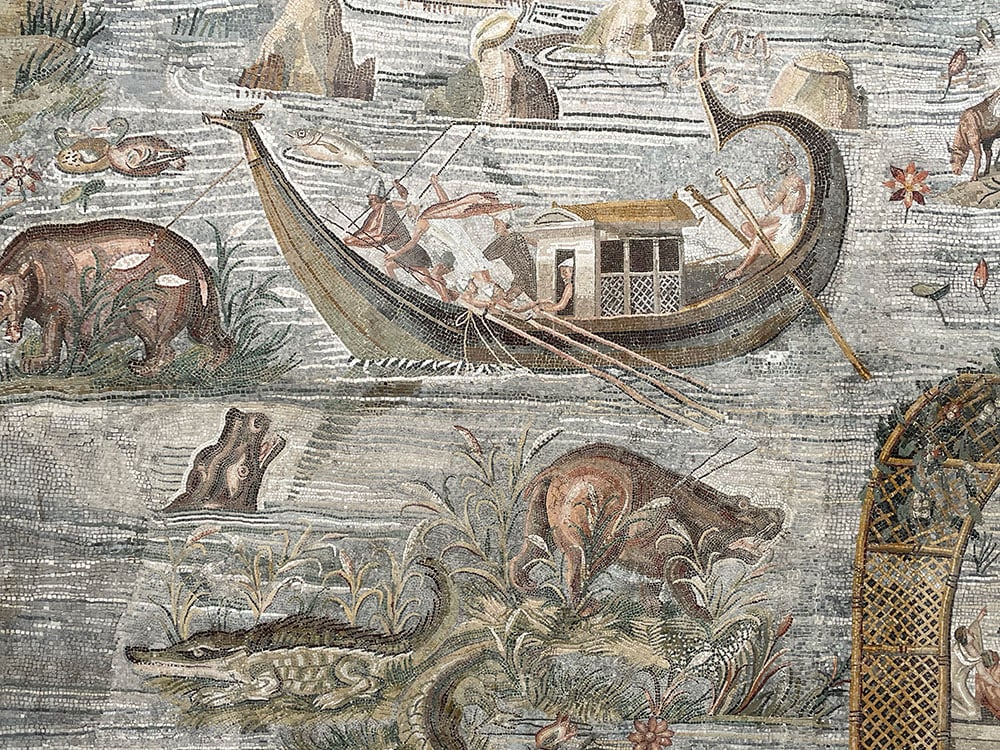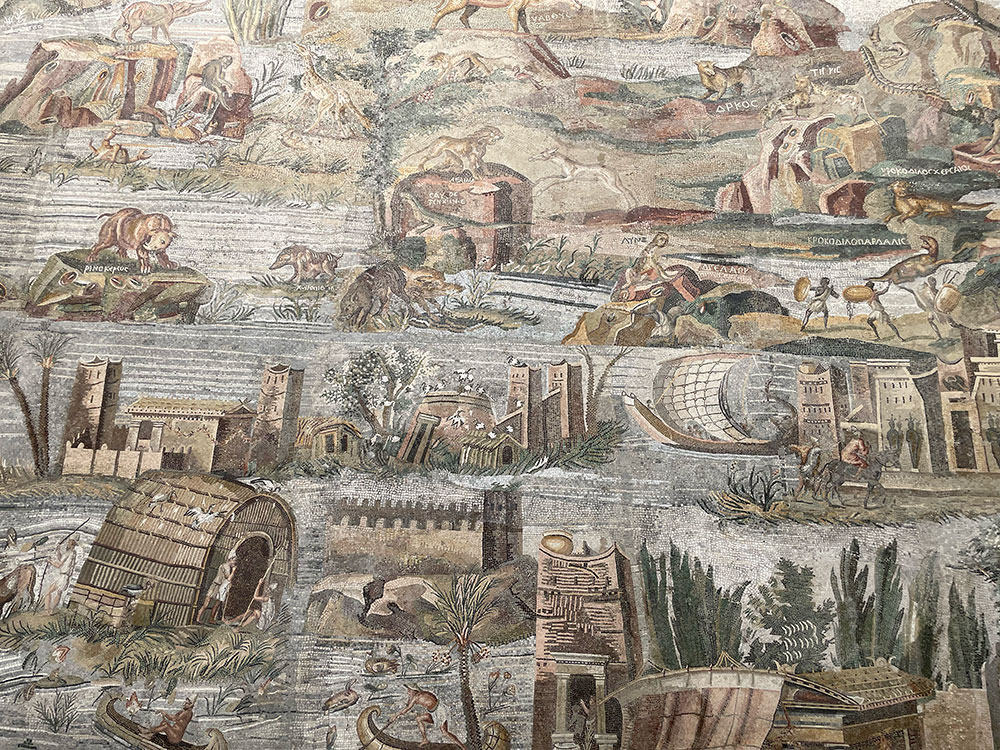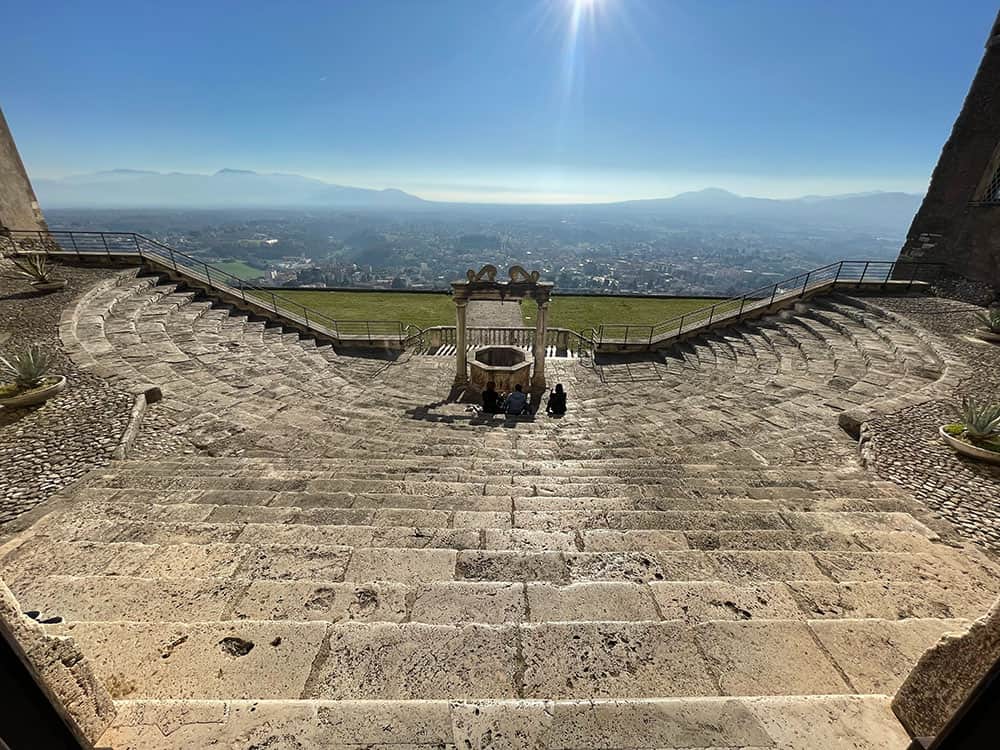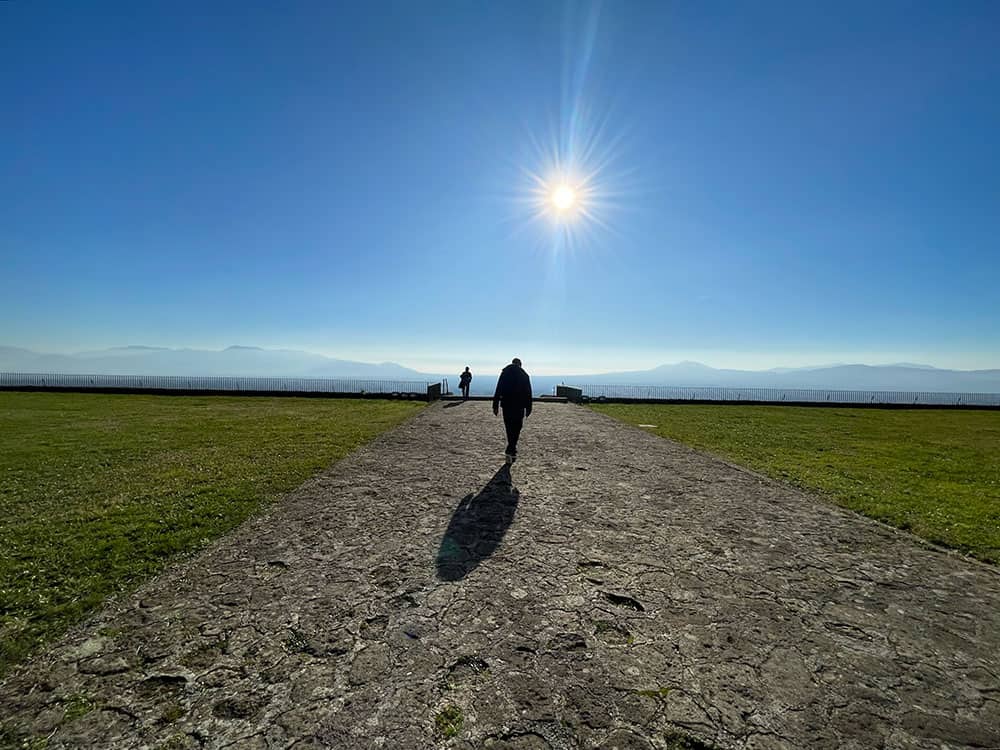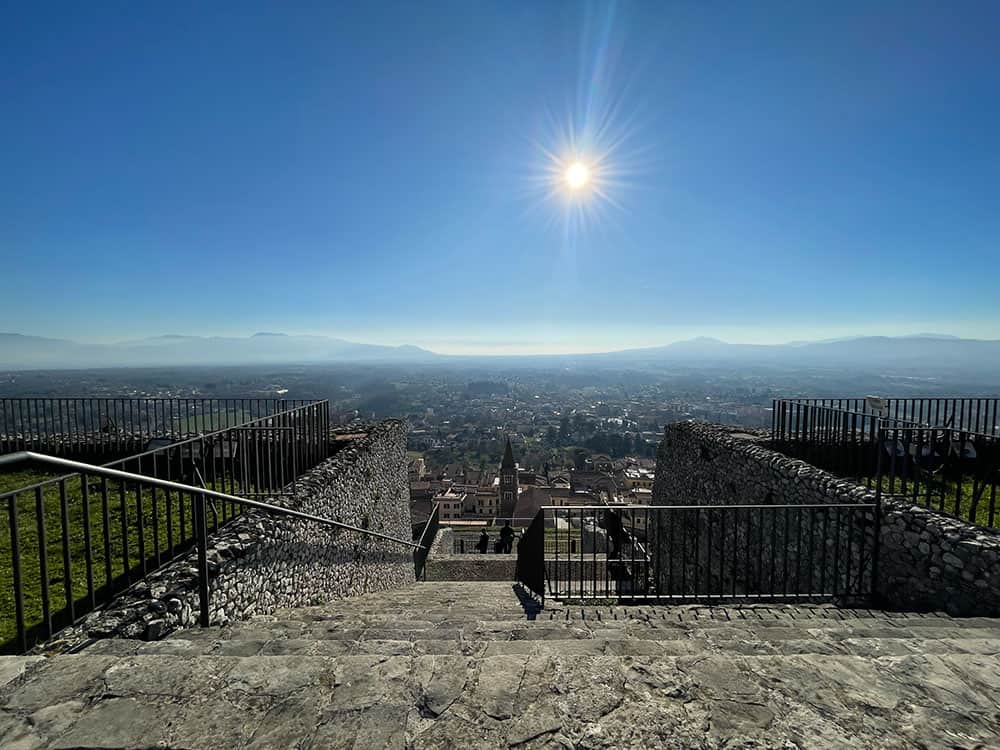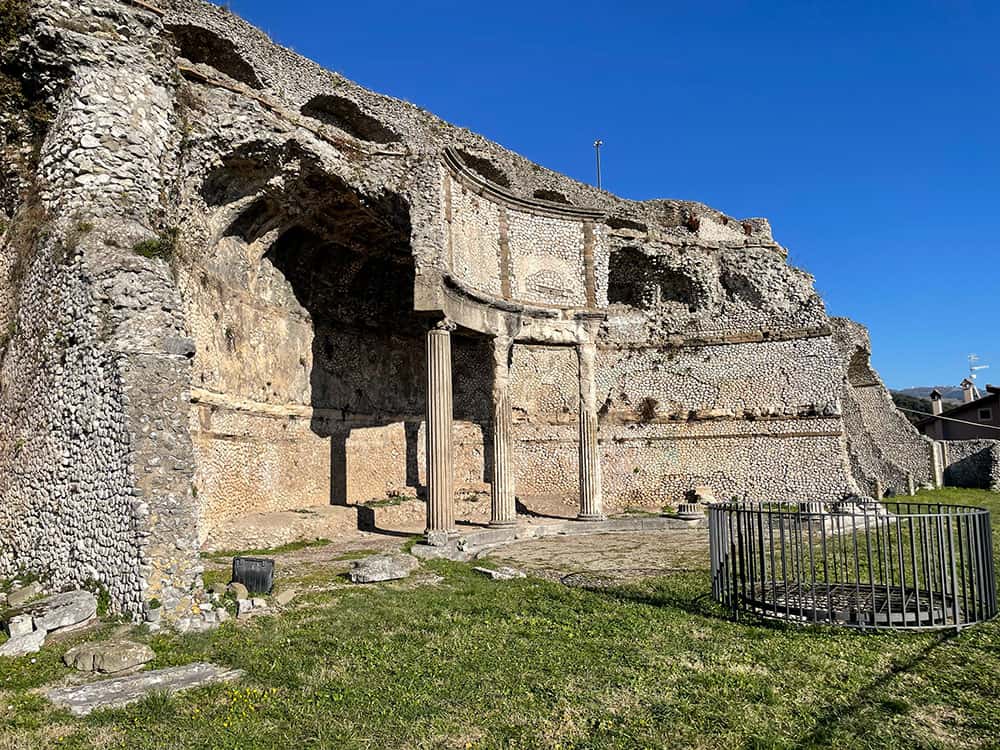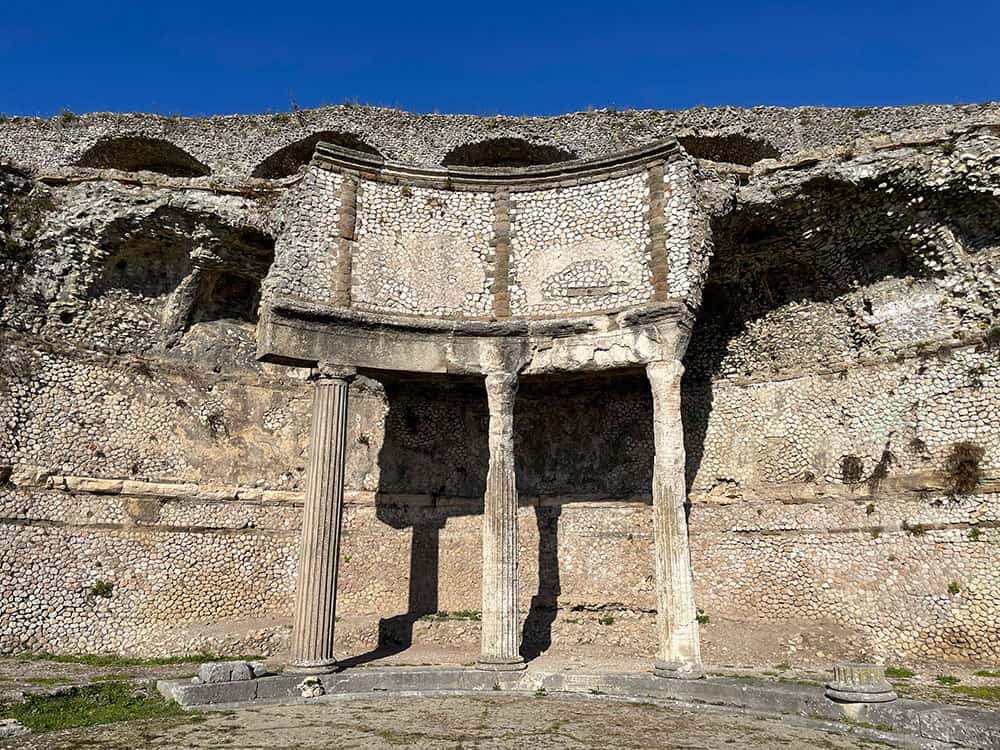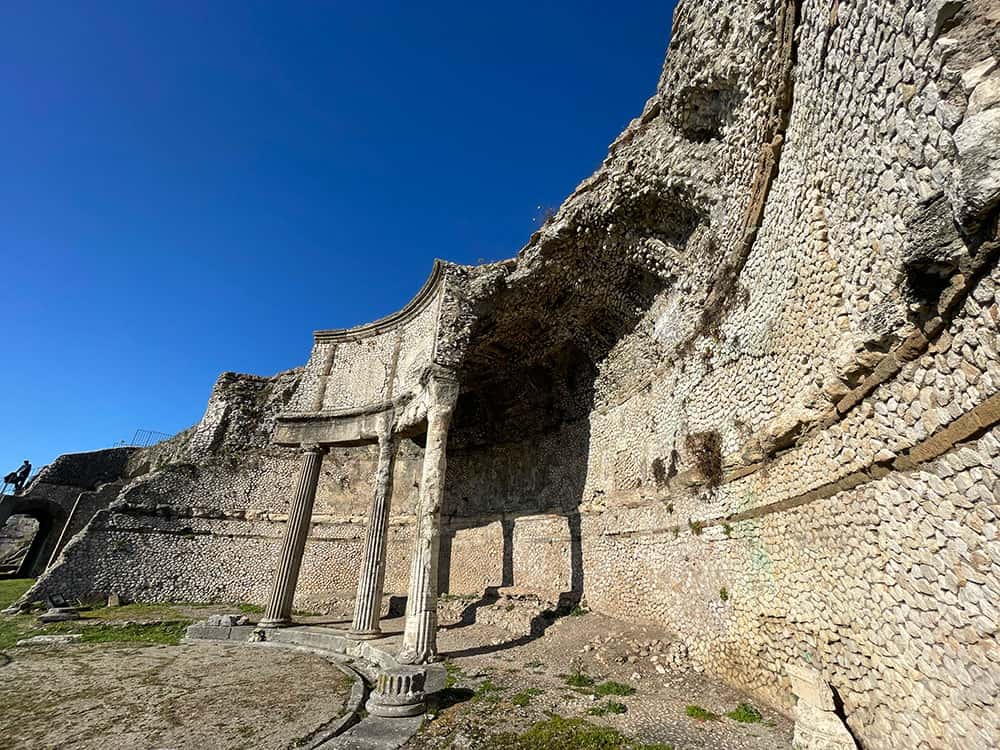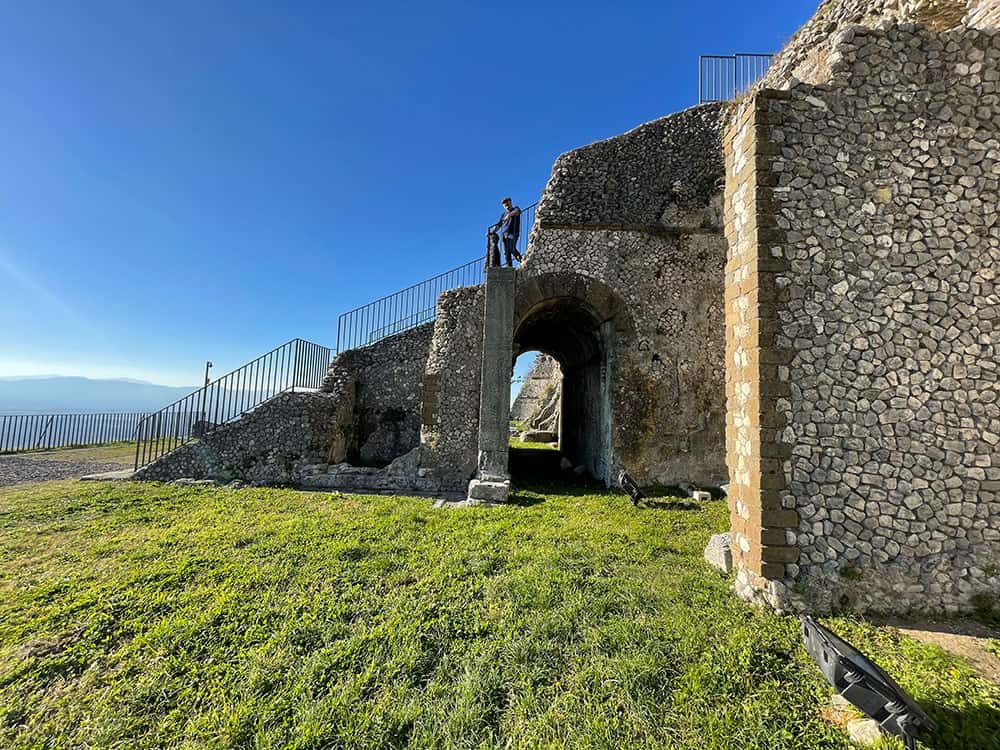When you’re lucky, you’re lucky. This year, after the usual family celebrations, Nazim and I decided to spend our Christmas holidays in Rome at the house of old friends, and to our surprise, we found ourselves on an archaeological trip organized by a mutual friend who is an archaeologist and a professor at the University of Tor Vergata.
Marco Fabbri is a kind and funny man, passionate about his field and the history of ancient Rome. In addition to being a great expert (among other things, he worked on the Pompeii excavations and participated in the extraordinary discovery of the Thermopolium, essentially a food shop beloved by the citizens of the Roman colony), he has the ability to explain complex and often incomplete architectural structures in a clear and understandable way by describing their original functions. (At the end of the article, we’ve included links to a couple of his YouTube videos about the Pompeii excavations.)
Archaeology not only helps us reconstruct how places and structures looked in antiquity, but through the comparison and integration of information derived from historical sources, it also allows us to understand the meanings that the inhabitants of these places attributed to the grand constructions we now admire with endless wonder and awe 2,000 years ago.
Without Marco, his wife Michela, and our friends Renato and Paola, we probably would never have discovered Palestrina, a town about an hour from Rome of Latin origin. It sits on the slopes of one of the Prenestini mountains and was once called Praeneste.

Although some artifacts unearthed in this area date back to the early 8th century BC, recent studies date the most significant development of this site and the construction of the
The sanctuary, renowned throughout the Roman world, was dedicated to the worship of Fortuna Primigenia, or “first-born” of Jupiter’s children, but also Primordial, thus simultaneously being Mother and daughter of Jupiter.
Marco explained that this site, built on a very steep and scenic terrace, faced south to ideally in a straight axis connect with another place of worship dedicated to the same goddess, located many kilometers away in the city of Anzio.
The complex was built over six artificial terraces on a rocky slope, connected by ramps and staircases.
The sanctuary in Palestrina stands out compared to the Hellenistic models that inspired it due to its use of the opus caementicium building technique. This method involved mixing lime with sand or pozzolana and stones to create the structural core of walls, which were then covered on the outside with opus incertum—a facing made of irregularly shaped stones with more or less flat visible surfaces.
This construction technique’s great static stability made it possible to create daring, large-scale structures like the one we are describing. Over time, this technique was widely adopted for its speed of execution, low material costs, and exceptional versatility.
The sanctuary was likely visited by a multitude of pilgrims who came not only to venerate the goddess but also to seek predictions about their future. The path leading to the temple’s summit featured a steep ascent that symbolized an ascensional purification ritual, guiding them physically and spiritually from the base to the top.
Arriving in Palestrina, you park in the town and head to Piazza Regina Margherita 1, where the entrance to the Complex of Forum Buildings of Praeneste, the ancient name of the city, is located.
Here you can buy tickets to visit both the first part of the site, where the remains of the forum can be admired, and the terraces and the Archaeological Museum, which is located at the top of the structure. I highly recommend purchasing the combined ticket to ensure you don’t miss anything during this delightful visit.
Unfortunately, it is not possible to follow the ascensional path once used by ancient devotees along the staircases and experience the element of surprise intended by the site’s designers, as Marco had hoped. Instead, you ascend via the charming alleys of the town until you reach the summit of the hill, where the National Archaeological Museum of Palestrina is located, housed in the Colonna Barberini Palace, which was modified into its current form in the 17th century.
At the entrance, you can admire a scale model of the Fortuna Primigenia sanctuary at a 1:50 scale, which is invaluable for understanding its original structure and architectural layout. The harmonious proportions of this grand complex have been imitated many times over the centuries and remain an undeniably scenic masterpiece today.
Inside the museum, you’ll find stunning archaeological artifacts, including jewelry, statues, sundials, bas-reliefs depicting the she-wolf nursing Romulus and Remus, tomb markers (cippi), and a marble head of Fortuna found in the sacred well of the second terrace’s hemicycles, likely associated with the goddess worshipped in the sanctuary.
The museum’s most sensational artifact is located on the top floor, in a vast room dedicated to it: the Nile Mosaic. Discovered and removed in the early 1600s from the Isiaca cult hall adjoining the basilica in the city forum (where we recommended beginning your visit), this mosaic has been restored and altered multiple times over the years.
Regarding the Isiaca cult, Fortuna was associated in the 2nd century BC with the Egyptian goddess Isis. Between the 4th and 2nd centuries BC, oriental deities penetrated Greek and Roman religions, and as the Roman Empire expanded, new syncretic deities emerged, blending foreign gods with traditional Roman ones. For this reason, the sanctuary is actually dedicated to both deities.
This colorful, large mosaic, made of tiny mosaic tiles and likely created by Alexandrian artists known to be in Italy in the 2nd century BC, offers a unique bird’s-eye view of Upper and Lower Egypt during the Nile’s flood in the Greco-Roman era. It depicts temples, cities—including the port of Alexandria—scenes of daily life, and exotic animals.
Take your time to observe the countless details of this refined mosaic: its chromatic shades, the movements of the depicted figures, and the perspectives of the constructions. The incredibly varied and harmonious composition captivates the gaze and invites close analysis of the intricate details that create this extraordinary masterpiece.
Leaving the museum, you descend the stepped semicircle where the Roman theater once stood and cross the last terrace (“Piazza della Cortina”), the largest, originally forming a vast U-shaped square surrounded on three sides by a double colonnade.
From here, you enjoy breathtaking views and can easily imagine the awe that pilgrims felt upon reaching the summit of the votive path.
Following the reverse route, you descend the steep central ramps almost suspended over the valley to a terrace (“Terrace of the Hemicycles”) that housed the oracular cult and the sacred well.
At the back, the space was enclosed by a continuous portico, behind which a series of barrel-vaulted rooms opened up, interspersed with two coffered barrel hemicycles, which today appear to have lost their external closures. In this location, there had already existed in antiquity a temple dedicated to the goddess Fortuna, corresponding to the right hemicycle, which was incorporated at the end of the 2nd century BC by the designers of the new monumental construction.
Faithful devotees from all over came to seek answers from the deity for their needs, but they did not directly access her prophecy.
The auruspices, priests skilled in divination and directly inspired by the goddess, interpreted the sortes to foretell the future. The “sortes” involved the random selection of phrases, words, and letters engraved on wooden tablets. This task was entrusted to a young boy symbolizing Iupiter Puer (Jupiter the Child). The boy was lowered into the well where, in darkness, he randomly picked some tablets. The designated priest then interpreted these (oracles).
The Sanctuary of Fortuna Primigenia was likely built through the efforts of citizen associations, eager to establish themselves after becoming wealthy from the influx of money and labor from the East, thanks to wars and significant commercial activity.
As Marco explains, in ancient Rome, these places represented social melting pots where religious cults, politics, commerce, and superstition intertwined in ways that are difficult for us to comprehend today. All shared customs and values blended into a single collective mode.
At this point, modern visitors must return to Palazzo Barberini, home to the Archaeological Museum, by climbing the steep stairs connecting the terraces, as the sanctuary’s base is not connected to the town. No matter—don’t miss the chance to once again admire the stunning panorama and take one last photo of the sun setting in the distance. It’s perfect for sharing with your family and friends back home.
Climbing and descending staircases and navigating steep paths, as Nazim says, will “work up your appetite.” We recommend L’Osteria Numero 5, located near the forum entrance (offering excellent traditional dishes and local wines), and Pasticceria Gelateria Vittoria at Largo Pompeo Bernardini 1, known for its delicious pastries and the genuine courtesy of its owners.
In short… Take your time and enjoy this trip at a leisurely pace.
Betti
How to get to Palestrina
Drone view of Sanctuary of Fortuna Primigenia link
Marco Fabri describes Pompei

